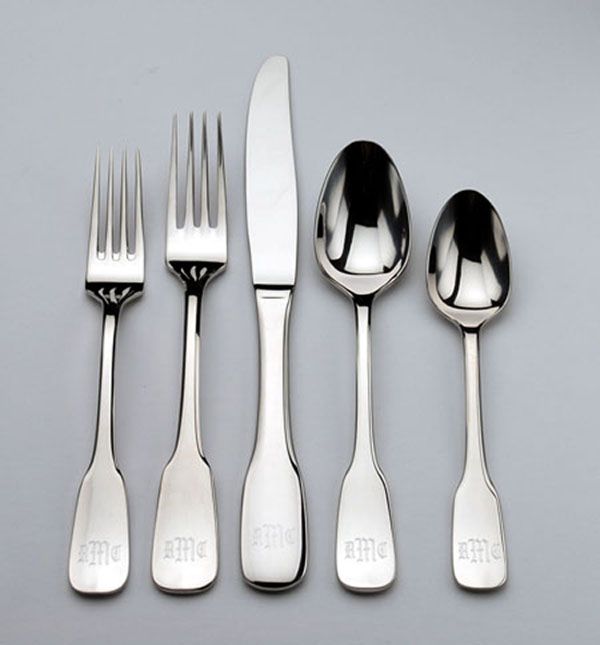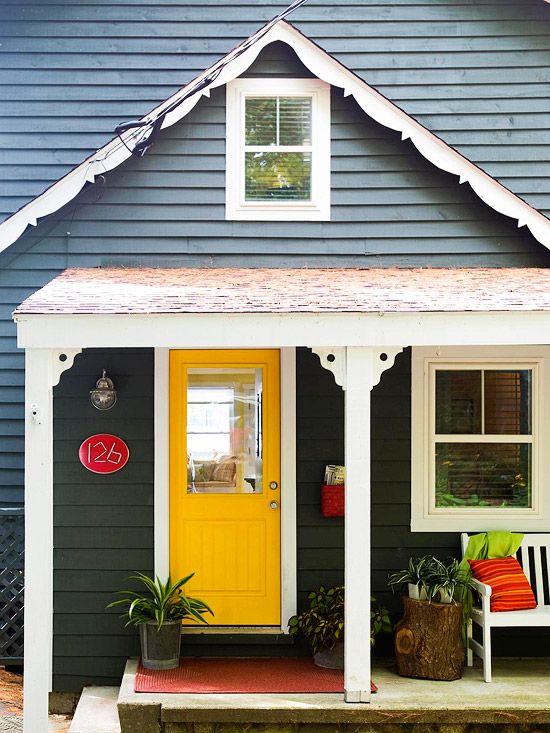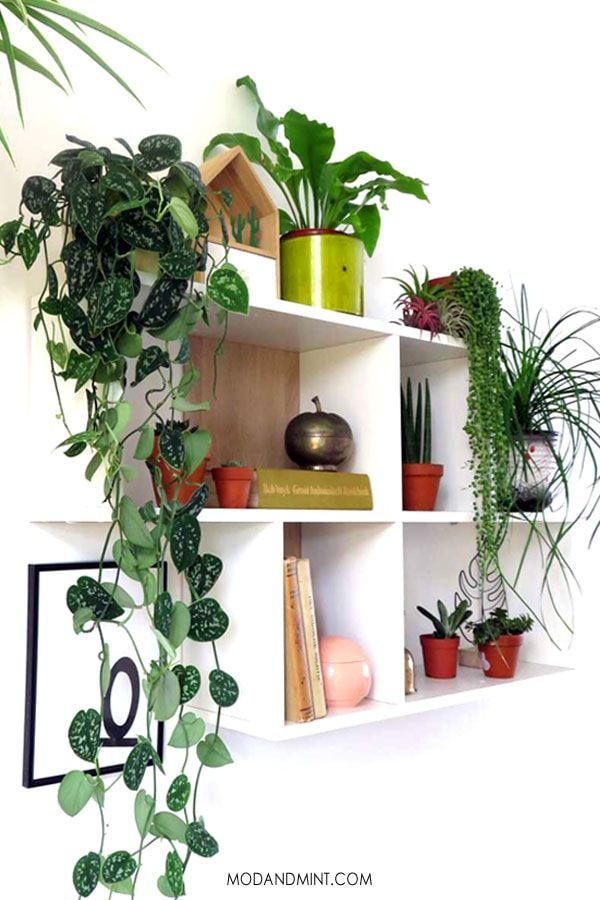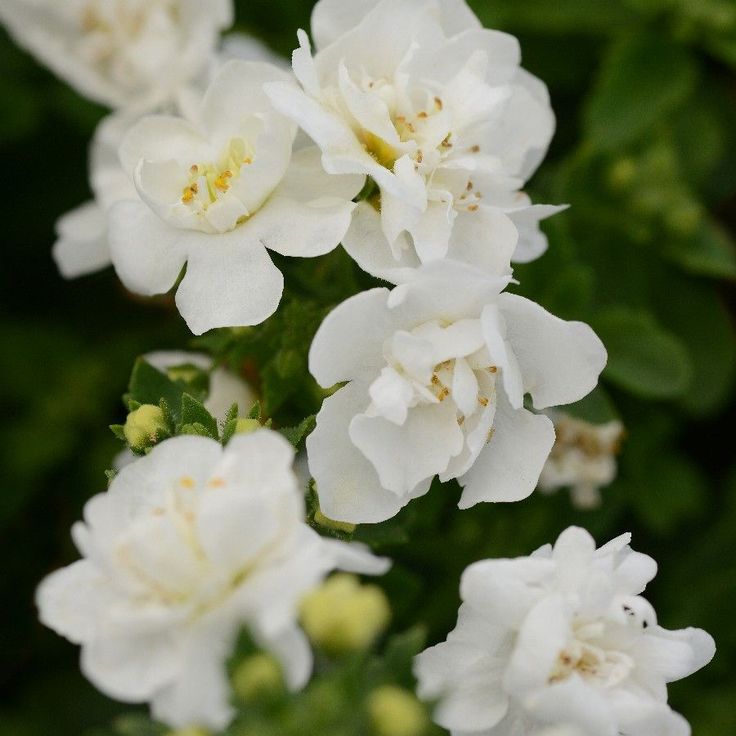Ways to organize a bookshelf
Ten Ways to Organize Your Bookshelf
I recently moved to a new apartment, which gave me an excuse to pursue, without guilt, my favorite procrastination activity: reorganizing my bookshelf. It also forced me to go through each and every one of my books and ask hard questions like, am I really ever going to read The Forsyte Saga? (Answer: It’s been up there for 10 years, but maybe? I kept it.) Or: will I ever reread Middlemarch, and if so, will I want to use this yellowed paperback with a taped spine that I got for free off of a stoop? (Answer: No. If a person returns to Middlemarch, they deserve a fresh copy, possibly a reissue with interesting new cover art.)
On my old shelves, my books were organized into four broad genres: fiction, nonfiction, plays, and poetry. Fiction was arranged by date published, nonfiction by subject area, and plays and poetry were not in any particular order. On my new shelf, I stuck with my broad genres, and within each one, I kept things simple and organized everything alphabetically. Boring, but effective. But part of the fun of reorganizing your books is considering all your options, so here are 10 organizational strategies for the next time you find yourself in the throes of moving, decluttering, or, if you’re anything like me, procrastinating.
1. Chronologically, by Date Published
As I mentioned above, this is how I have arranged the majority of my books for the past decade. It’s kind of a pretentious way to shelve your collection, and to make it even more pretentious, I got the idea secondhand, from a literary memoir. (I can’t remember whose memoir anymore.) But this method ended up working for me for two reasons: 1) the act of putting my books on the shelf in order helped me to remember history, and to get a better sense of which writers were writing and publishing at the same time, and perhaps influencing one another; and 2) when I add books to my collection, they’re usually brand-new, published recently, and it’s easier to just plunk them down on the end of the shelf rather than finding a place for them alphabetically.
2. By Color
If you have a large number of books, this is an extremely silly way to organize your bookshelf. I know, because I tried it once. I have a good memory for covers and I thought it would be an intuitive way to find my books—and would look pretty, too. What I didn’t realize is that the spines of books are sometimes a different color from the front covers. I found myself spending a lot of time looking for, say, a book I was certain was red, only to discover that its spine was blue. But, if you really love putting things in rainbow order, and you have a small number of books that you know well, this could be a visually striking way to arrange your shelves.
3. Artful Piles
I’ve seen this in design magazines and once when I was visiting a fancy Nolita loft, where tall stacks of art books were arranged in uneven piles on a long bench. It reminded me—not unpleasantly—of the scene in The Great Gatsby when Nick Carraway visits Gatsby’s library and discovers that none of the pages of the books have been cut for reading.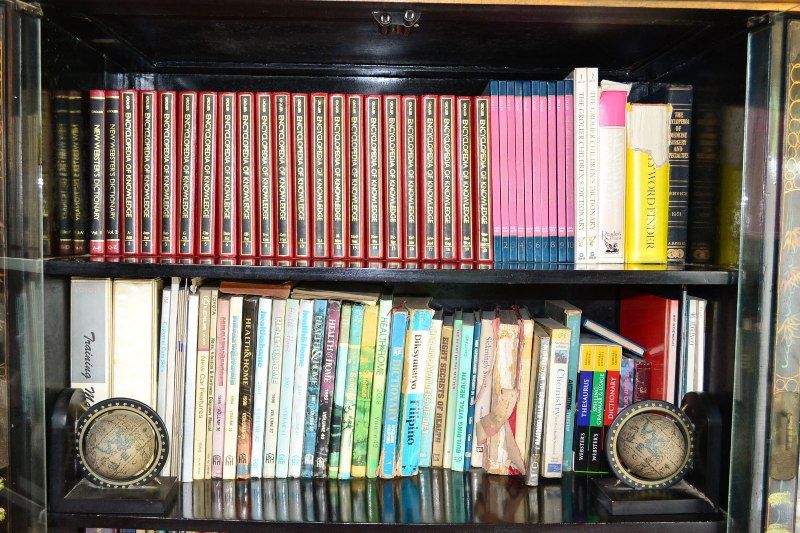 So if you have a lot of beautiful books that are just for show, artful piles might be the way to go.
So if you have a lot of beautiful books that are just for show, artful piles might be the way to go.
4. By Subject/Genre
If you’re a collector of books on a particular subject, or a big fan of a particular genre, this is probably the most satisfying way to arrange your books. It’s also a good way to organize your books if you don’t have a good memory for titles and authors. I group my nonfiction books by subject because I don’t always remember nonfiction authors and titles as readily as writers of fiction. My subjects are: History, Criticism/Literary Interest, New York City, and Art/Design. (I debated giving memoirs, letters, and journals their own nonfiction subject area but ultimately decided to shelve them with fiction, since in many cases, I’m most interested in the memoirs of authors whose fiction I admire.) A handful of my books don’t fit into any of those categories, and they are stacked up vertically in a miscellaneous pile, near the art books.
5.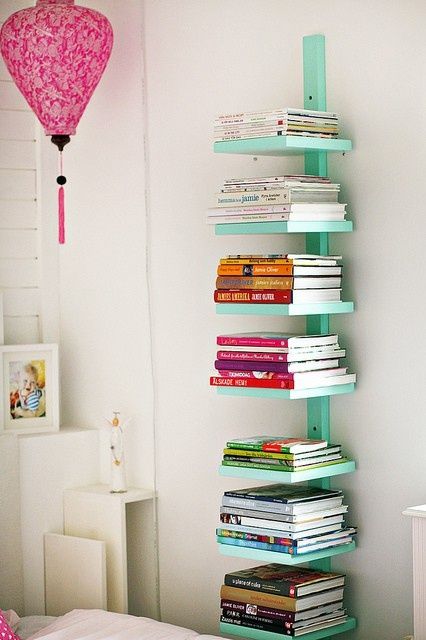 Geographically
Geographically
I’ve never seen anyone organize books this way, but why not? The question is, when you’re organizing geographically, do you go by the author’s place of birth or the particular place that an author is associated with? For example, would Joseph Mitchell be a New York writer or a southern writer? What about Ernest Hemingway? The Midwest, Florida Keys, or Spain? Another option would be to organize by the geographical setting of a particular book, which is somewhat more definitive, though many books are located in multiple locations and/or fictional places. A compromise might be to devote a section on your bookshelf to one particular geographical area.
6. In Order of Importance and/or Goodness
This could be a good way to start debates among guests. It also could be a good way to kill a rainy afternoon.
7. Secretively
If you don’t want anyone to know what you’re reading and/or if you don’t care about being able to find your books, you can place them on the shelves so that the spines are facing the wall.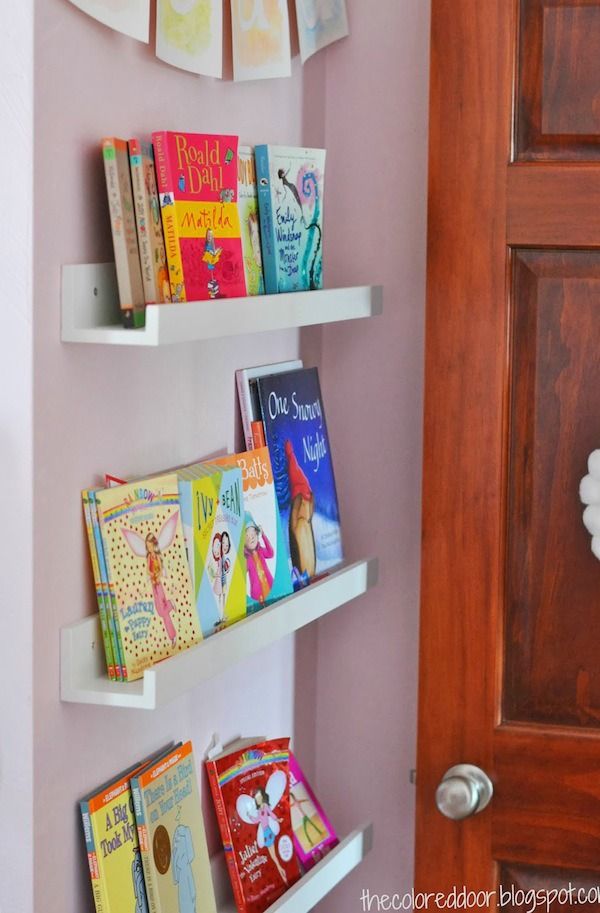 This will give your shelves a soothing, monochromatic look. It will also make it difficult for people to borrow books from you.
This will give your shelves a soothing, monochromatic look. It will also make it difficult for people to borrow books from you.
8. Alphabetically
This is the obvious, most boring method, but it might be the friendliest, too. Anyone looking for a book in your library will be able to find it. It’s kind of interesting, too, to see who ends up next to each other.
9. Randomly
You don’t have to organize your books at all. You can shelve them in no particular order, like Pamela Paul, New York Times Book Review editor: “What I like about that disorder is that it allows that element of surprise and serendipity.” Personally, I couldn’t stand to do this at home, but I do enjoy perusing the strange mix of books that you find in beach houses and summer cottages, for the way it always leads to an unexpected choice.
10. Autobiographically
Credit for this idea must be given to the film High Fidelity (based on the Nick Hornby’s novel by the same name). Post break-up, a lovelorn record store owner, Rob, decides to reorganize his record collection autobiographically. He arranges his records in an order that only he can understand, the key to which are his life experiences and personal obsessions. He explains to a friend, “If I want to find the song “Landslide,” by Fleetwood Mac, I have to remember that I bought it for someone in the fall of 1983 pile, but didn’t give it to them for personal reasons.”
Post break-up, a lovelorn record store owner, Rob, decides to reorganize his record collection autobiographically. He arranges his records in an order that only he can understand, the key to which are his life experiences and personal obsessions. He explains to a friend, “If I want to find the song “Landslide,” by Fleetwood Mac, I have to remember that I bought it for someone in the fall of 1983 pile, but didn’t give it to them for personal reasons.”
It could be argued that every bookshelf, like every piece of writing, is autobiographical, even with its veneer of objective organization, but I admit I can see the nostalgic appeal in consciously organizing my books according to the stages of my life. I’m not sure how I would end up grouping my books, but it would be interesting to think back on all the people—family members, teachers, friends, writers—who have influenced my reading, the classes I’ve taken, the authors I’ve met, the booklists I’ve clipped, and the summers I’ve whiled away. I’d also have to reckon with some of the less flattering aspects of my bookshelf, like the fact that a certain number of books will always remain unread, and another, larger percentage will never be reread because my hope of returning to them “one day” has nothing to do with a desire to reengage with the author, but instead, to return to a certain period of my life, a frame of mind, or even a particular person or place. To shelve autobiographically is to embark on a journey of self-examination, which is why I’m saving it for when I undergo a midlife crisis—or maybe when I move to a bigger apartment.
I’d also have to reckon with some of the less flattering aspects of my bookshelf, like the fact that a certain number of books will always remain unread, and another, larger percentage will never be reread because my hope of returning to them “one day” has nothing to do with a desire to reengage with the author, but instead, to return to a certain period of my life, a frame of mind, or even a particular person or place. To shelve autobiographically is to embark on a journey of self-examination, which is why I’m saving it for when I undergo a midlife crisis—or maybe when I move to a bigger apartment.
Image Credit: Wikimedia Commons.
The Millions' future depends on your support. Become a member today.
Hannah Gersen is a staff writer for The Millions and the author of Home Field. Her short stories have appeared in The Southern Review, The North American Review, The Chattahoochee Review, and Visions, among others. She writes about movies on her blog, Thelma and Alice and thelmaandalicesubstack. com. Read more at hannahgersen.com or sign up for her newsletter here.
com. Read more at hannahgersen.com or sign up for her newsletter here.
15 ways to keep on top of your tomes |
When you purchase through links on our site, we may earn an affiliate commission. Here’s how it works.
(Image credit: Future)
By Tara King
published
There’s no one-size-fits-all approach to organizing a bookshelf. Whether you sort alphabetically, by genre, in height order or something else entirely, if you can find what you need and you’re happy with how it looks, that’s all that matters.
As part of organizing a living room, good-looking bookshelves can truly lift the spirits – and encourage us to pick up a book more often too.
'Having books on display really adds a homely feel to any interior scheme. How you organize them really comes down to personal taste – there are no right or wrong answers,’ says Adam Brown, Director at The Painted Furniture Company .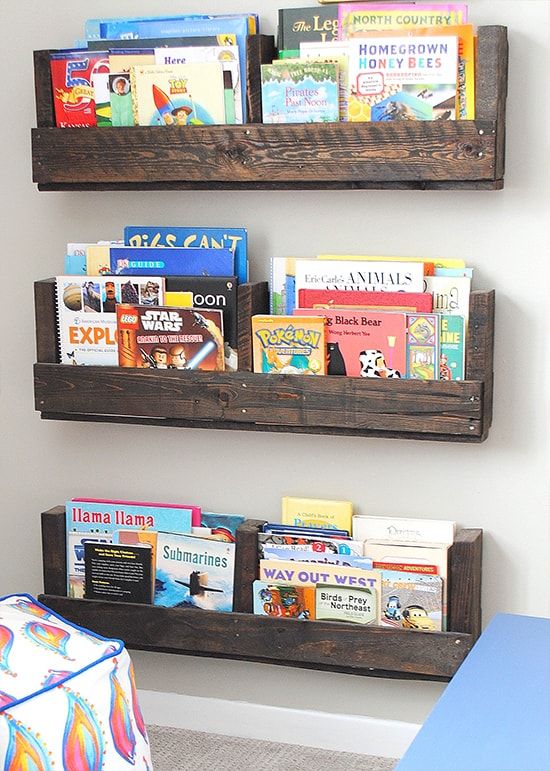
Depending on how many books you have in your collection, organizing a bookshelf will likely take you the better part of an afternoon to do well. However, once you’ve decided on a system that works for you, it’s easy to keep it looking artful, particularly when complemented by meaningful keepsakes, photos and artwork.
Organizing a bookshelf
We’ve compiled the best expertise to help you realize your bookshelf ideas and create a library-worthy level of bookshelf organization that’s not just practical to use, but beautiful to look at as well.
1. Edit your book collection
(Image credit: Future / David Lovati)
A common mistake when organizing a bookshelf is to try to fit in your entire book collection. This often results in a haphazard arrangement that makes it impossible to create orderly book storage ideas. Set yourself up for success by starting with a good decluttering session. Empty your shelves completely and give them a good clean.
According to the KonMari method, you should only keep books that bring you joy – everything else should be donated or gifted.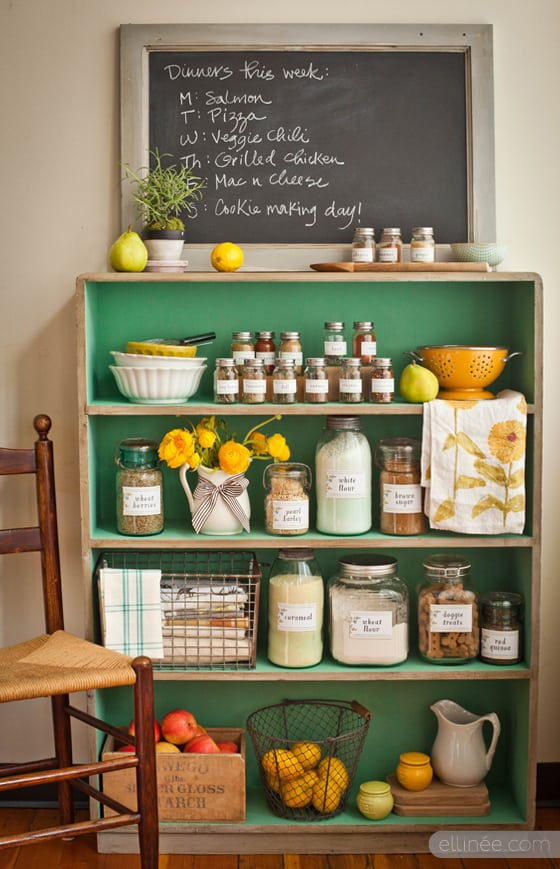
Most public libraries will accept book donations to sell at their semi-annual book sales, while children's books can go to area preschools and local school aftercare programs. Certain charities won’t accept books, so check in advance,’ advises home organizer Ben Soreff, founder of House to Home Organizing .
If you’re still struggling to decide, we recommend creating a ‘maybe’ pile. Position these away from your ‘keep’ collection temporarily, perhaps a week or two, somewhere you can easily see them, then take your time deciding whether to move any of them over to your main collection.
2. Order books alphabetically
There are several ways to order books, so think about what makes the most sense for your home library ideas. If it’s a bookshelf that you frequent regularly, we’d recommend an alphabetized system. It might not be the most creative way to arrange and organize books, but it certainly makes it quick and easy to find what you’re looking for.
If you’re alphabetizing based on the book’s title, you’ll likely have quite a few books that start with ‘A’ and ‘The’, so you’re best of leaving out the first word and organize based on the second word in the title instead.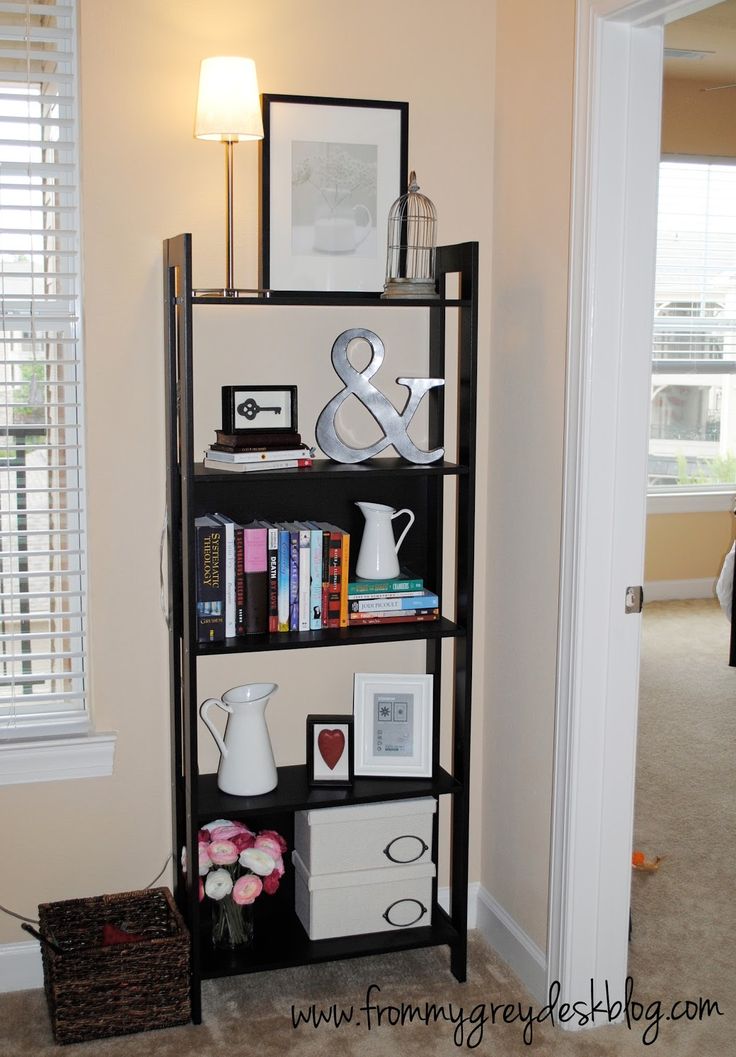 Be sure to let everyone in the household know to avoid any confusion.
Be sure to let everyone in the household know to avoid any confusion.
Another option is to arrange alphabetically based on the author’s last name, like they do in bookshops and libraries. The only downside is remembering who wrote what… but if you’re someone who has a few favorite authors, this might be the system for you.
3. Group by genre
(Image credit: Sims Hilditch )
Whether you’re designing a home library, or you’re the sort of person who often picks books based on your mood, organizing books by genre is a great idea. You could keep it simple, fiction and non-fiction for example, or break things down into general categories: action, mystery, romance, fantasy and so on. There’s likely to be some cross-over, so keep a log of where you’ve filed your books for ease.
4. Create a rainbow effect
(Image credit: Future)
Organizing a bookshelf in order of color is not the most practical method but it’s certainly the most aesthetically pleasing and one way to style a bookshelf.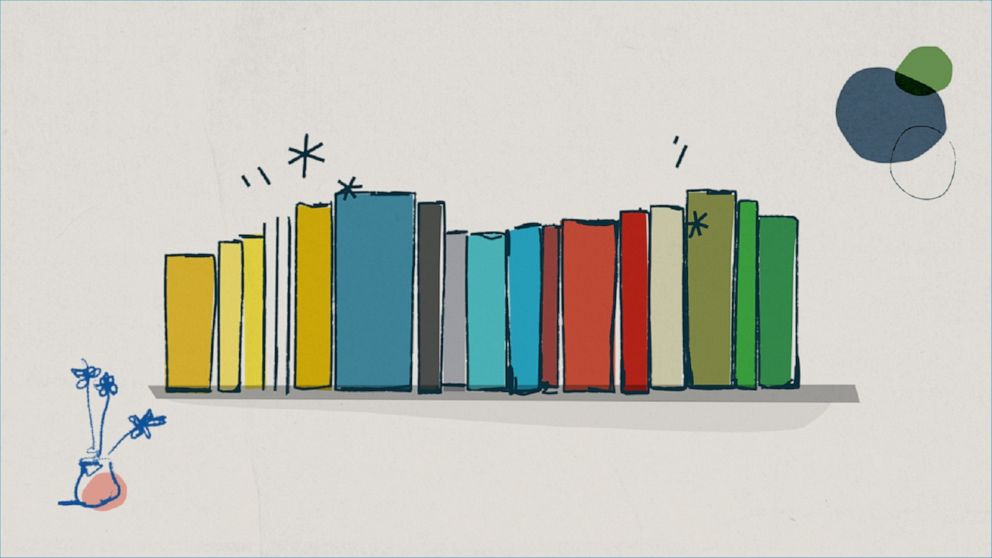 Unless you’re someone who remembers books based on their covers, we’d recommend reserving it for bookshelves you don’t access very often.
Unless you’re someone who remembers books based on their covers, we’d recommend reserving it for bookshelves you don’t access very often.
To create a stylish ombre effect, organize book jacket colors from dark to light, bottom to top – black, navy and charcoal books on the top shelf, white on the bottom, with all the colors in between. If you don’t have the book collection – or the inclination – to create a full rainbow spectrum, simply color block your shelves to complement your room’s color palette.
If you’re organizing a bookshelf with children in mind, professional organizer Kathryn Lord of More to Organising says:
‘Color coordinating your bookshelf means your child can easily put things back. It also means they can find their favorite book without pulling everything out as even before they can read, they know what color their favorite book is’.
5. Reserve prime space for favorite books
(Image credit: Future)
If you're considering reading nook ideas, this is the perfect opportunity to create a smaller group of your favorite books, or those you need access to most regularly, separately from your primary organization system.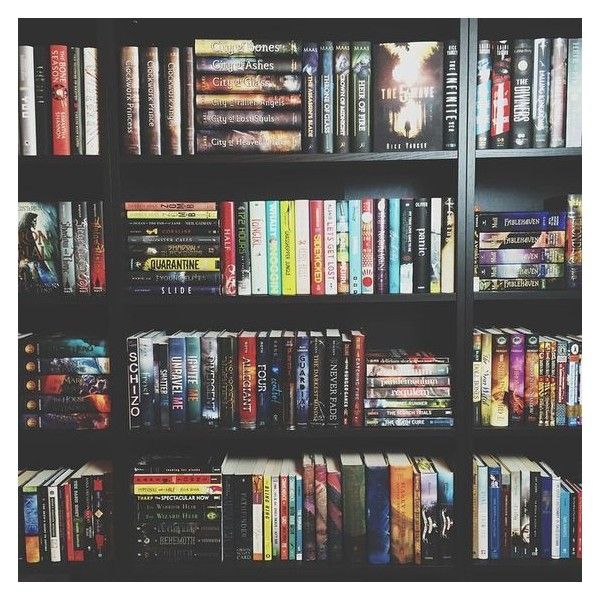 Position them within easy-reach (middle-section shelves for most, depending on your height) to save you having to find them each time. Keep them separated from the rest with book dividers or use objects and book stacks either side.
Position them within easy-reach (middle-section shelves for most, depending on your height) to save you having to find them each time. Keep them separated from the rest with book dividers or use objects and book stacks either side.
Avid book readers might also find this technique useful for grouping not-yet-read books, so they’re easy to find and flick through when looking for something new.
6. Organize books by height
Grouping books of a similar size and height together will give your collection a clean, streamlined look, perfect if you are looking for smart living room bookshelf ideas. However, depending on the look you’re going for (and how functional you want your organization to be) you could have a little fun with different arrangements. Maybe keep tall books on the edges and go shorter in the middle, or alternate shelves starting with the tallest book, then the shortest, and so on.
7. Stick to the two-thirds rule
Ensuring your books have space to breathe is not only good for their shelf life, but also the functionality and style of your display.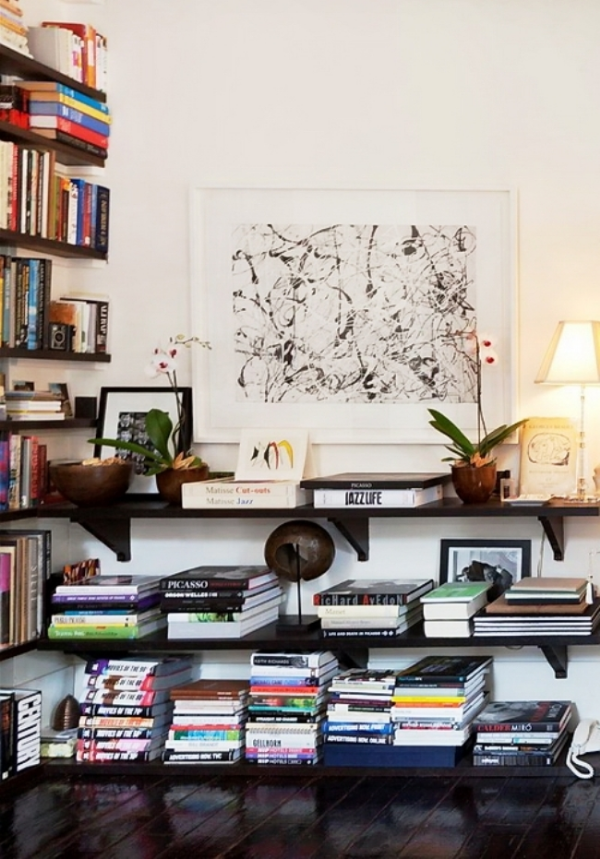
‘Crowding books tightly on shelves make them impossible to pull out, while overcrowding can make for a cluttered feel,’ says home organizer Ben Soreff.
According to the experts, this can be avoided by instilling the ‘two thirds rule’: only fill two-thirds of each shelf with books. What you do with the empty space depends on what look you’re trying to achieve. Add in decorative accessories or leave it clear for a minimalist vibe.
8. Build stylish stacks
(Image credit: Future)
Oversized hardbacks can overpower a bookshelf arrangement when arranged standing up, not to mention take up space. Stack them with spines facing outwards, starting with the biggest book at the bottom. If your shelf is at eye-level, choose a book with an attractive front cover to go on the very top.
Stacking is also a good tactic for differentiating types of books, such as non-fiction, recipe or reference books, for example.
9. Leave space for other items
(Image credit: Neptune)
Bookshelves aren’t just for books. Family photos, heirlooms, vases with flowers… anything that brings you happiness when you look at it deserves a designated place.
Family photos, heirlooms, vases with flowers… anything that brings you happiness when you look at it deserves a designated place.
‘Styling can often be an undercover organizational tool for shelving,’ says Heather Hoerzen, design editor at Havenly . ‘Creating a little vignette with a tray, diffuser and pretty faux plant not only sparks joy, but it can also serve as a reminder to put things back as you found them’.
A good rule of thumb is to group items in odd numbers ensuring plenty of space around them. Keep your room’s color palette in mind but try not to worry too much – over-styled bookcases can look a little cold, while meaningful items will automatically inject warmth and personality into the room.
10. Prop up artwork
Adding your favorite art pieces to your bookshelf adds visual impact, turning it into a stylish focal point rather than something that’s purely practical. A propped collection comes with the benefit of no nails, so can be effortlessly transformed on a whim for a whole new look.
Position your most prominent pieces in the center of the shelf and then work outwards with smaller pieces. Combining different styles, sizes and colors of picture frames creates a lovely lived-in look, along with postcards and canvases to break it up. Pick out key tones within your prints, or maybe even a theme, to ensure your display feels considered.
11. Arrange by style
(Image credit: Brent Darby )
While most libraries like to organize a bookshelf alphabetically, and this tried-and-tested system works wonderfully for those wanting to find a specific author with ease, we sometimes like to throw the rulebook out of the window by arranging our books by the style of the spine. For example, those of us who are more visual might be inclined to remember a book by what the cover or spine looks like, rather than wanting to search alphabetically.
Here, this aesthetically-pleasing space doesn't follow any particular system, yet it still somehow works. After all, our brains are wired differently, so do what is best for you and your family.
After all, our brains are wired differently, so do what is best for you and your family.
12. Match books to the color scheme
(Image credit: Future)
Are you a particularly visual person? Us, too. That is why this space works so well; the books seamlessly color coordinate with the rest of the room. There is absolutely nothing wrong with wanting to ensure that your scheme remains cohesive and tailored, especially when covering your books with the same color jackets is so easy to do. The result? A space that looks like something out of a story book.
13. Leave empty spaces
(Image credit: Future)
Just because you have the space, it does not mean that you need to fill every nook and cranny. This bookshelf is a perfect example of letting a space breathe; hugely important in a home office or bedroom.
I have seen time and time again, that people like to cram as much onto on bookshelf as they can, so once you've done a declutter, think about keeping it simple, especially if your bookshelf looks as beautiful as the one above.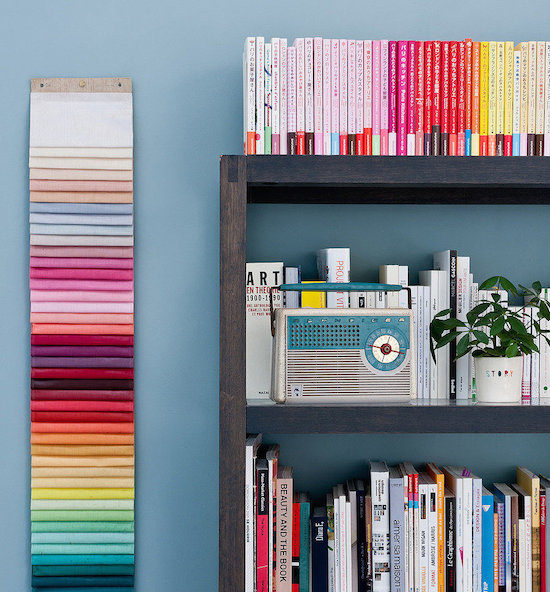
14. Use art to divide books
(Image credit: Future )
Rather than just simply arranging your books on a shelf, think about breaking up the space between genres, authors, colors or styles with art. Use prints, objects and vases to add interest and visual break points to rest the eyes and draw attention away from old or tattered books.
Here, this bookshelf draws the eye to every single visual breakpoint beautifully and wonderfully stimulates the senses without causing disruption to the central focus; the TV.
15. Place lesser used book on the top shelf
(Image credit: Future )
If you have books that you've read but just can't bear to part with, then consider placing them on the top shelf, just high enough to admire, but also ensuring that they are well out of the way. Keep the lower bookshelves free for books and other objects, like vinyl, and more regularly used items.
What is the best way to organize a bookshelf?
Contrary to popular belief, maximizing space on your bookshelf space does not mean filling every inch with book upon book.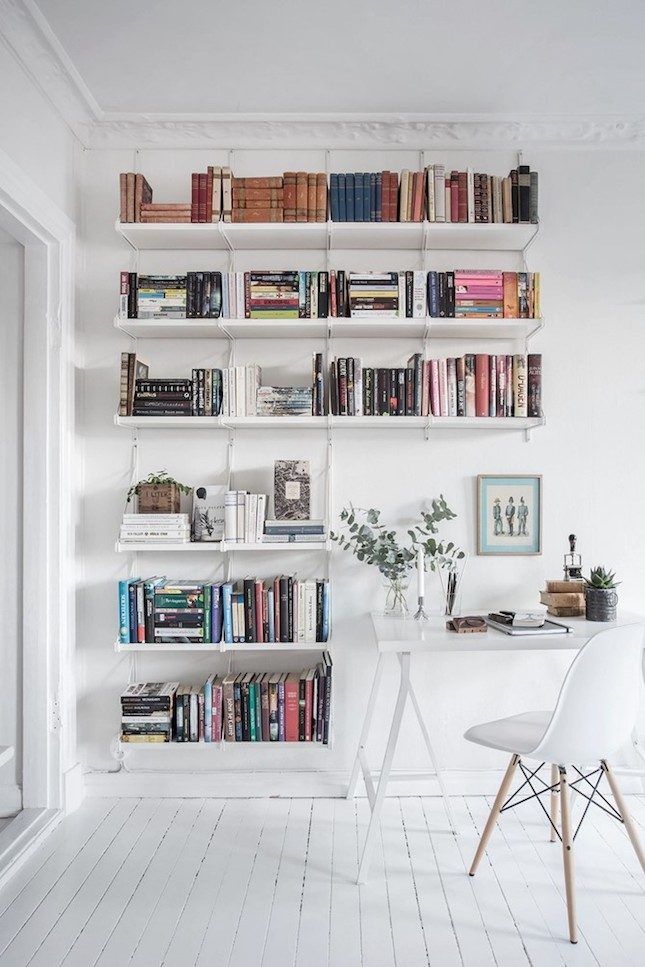 Instead, think about clever ways to store books that utilize the space you have in the best way, while still allowing for some empty areas. This will help create a pleasing aesthetic overall, especially important for creating a calm finish, for bedroom bookshelf ideas or when you’re organizing a home office, for example.
Instead, think about clever ways to store books that utilize the space you have in the best way, while still allowing for some empty areas. This will help create a pleasing aesthetic overall, especially important for creating a calm finish, for bedroom bookshelf ideas or when you’re organizing a home office, for example.
Stacking books rather than lining them up makes the most of vertical space that would otherwise go unused. Start with bigger, heavier books at the bottom and go down in size from there. Alternatively, consider layering two rows of books along one shelf. If you decide to do this, it’s worth investing in shelf risers. Position the back row on the top of the riser for extra visibility and use the cubby hole underneath to store other books that you use less often, or don’t look as nice on display.
Look at using the very top of your bookshelf – could you line it with baskets for extra storage? Also look to see if your shelf heights can be easily adjusted. If so, you could squeeze in an extra shelf at the top to house smaller books or items.
How do I organize a bookshelf?
Organizing a bookshelf in a home is a personal choice and, unless it’s your preference, doesn’t have to follow an established system. However, there are a number of ways you might approach the task.
If finding books speedily is crucial, arranging in alphabetical order, or perhaps alphabetical order within subject-specific sections, is a good idea. Of course, if each section isn’t large, then just putting like with like so, for example, interiors books are together, will suffice.
For a stylish display, arranging by color is a popular tactic and you might choose darker spines for lower shelves with colors becoming progressively lighter as shelf height increases.
At an individual shelf level, meanwhile, arranging by height with taller books on each side of the shelf can create a balanced impression.
For interest consider shelving some books horizontally as well as placing them vertically, and show off decorative objects along with books to give the eye plenty to appreciate.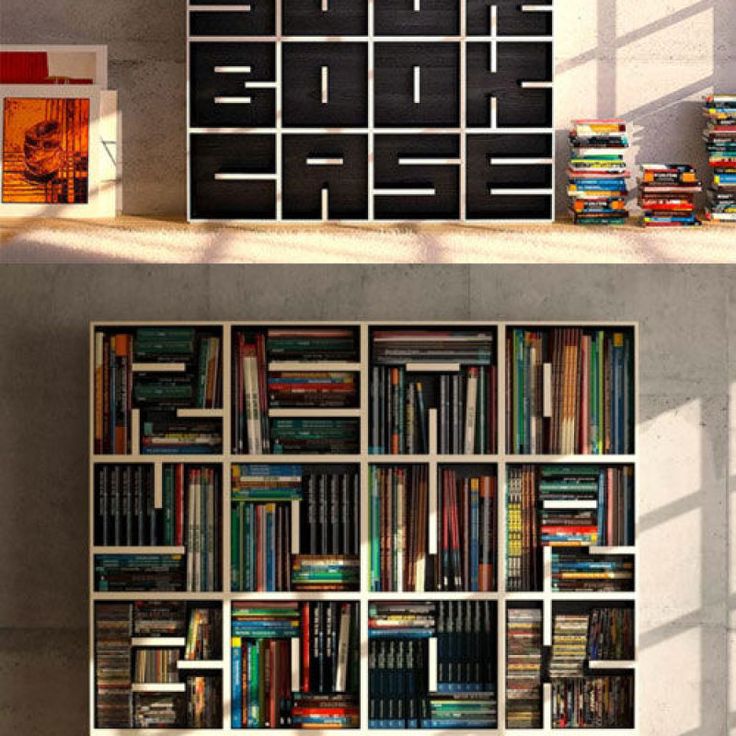
For 10 years, Tara King worked as a Content Editor in the magazine industry, before leaving to become freelance, covering interior design, wellbeing, craft and homemaking. As well as writing for Ideal Home, Style at Home, Country Homes & Interiors, Tara’s keen eye for styling combined with a passion for creating a happy – and functional – family home has led to a series of organization and cleaning features for H&G.
With contributions from
- Jennifer EbertDeputy Editor (Digital)
35 functional and beautiful ways to store books in the interior - Roomble.com
2021-09-04T03:10:00+00:00 2021-09-04T03:13:29+00:00 35 functional and beautiful ways to store books in the interior 2021-09-04T03:10:00+00:00 Do you have problems with the organization of bookshelves - there is not enough space or you want a bright and unusual solution? We present unexpected and interesting projects of "libraries" for modern interiors with space saving: from classic to outrageous 35 functional and beautiful ways to store books in the interior nine0003
Do you have problems organizing your bookshelves - lack of space or want a bright and unusual solution? We present unexpected and interesting projects of "libraries" for modern interiors with saving space: from classic to outrageous
Books for many of us - with all the abundance of television, the Internet, social networks, book readers and other gadgets in our lives - remain an indispensable friend and assistant.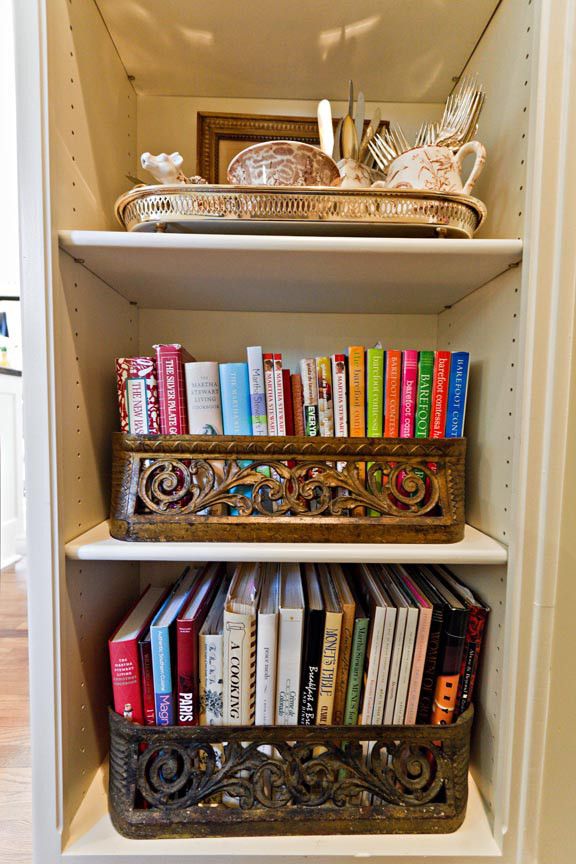 Therefore, talk about the fact that the book has ceased to be a necessity, but is gradually turning into an anachronism, remains talk. To which you react less, the more books you have. nine0003
Therefore, talk about the fact that the book has ceased to be a necessity, but is gradually turning into an anachronism, remains talk. To which you react less, the more books you have. nine0003
The question is different - how to place books in often not the most spacious living quarters? This is true not only for "Khrushchev" or nine-story buildings, but also for suburban housing, where it is much more spacious. After all, it is necessary not only to organize the storage of books, but also to provide easy access to them. And, most importantly, it should be beautiful.
The use of a ladder as a library at the same time is not a new idea, but it is very interesting and varied in its incarnations. The simplest options are easily implemented even without rework and serious hassle. Much of what is offered for review can be used as an addition to an existing interior. Well, if a “big repair” is being started, then it all depends only on the number of books you have and the desire to organize a new place for their storage - beautiful, unusual, convenient.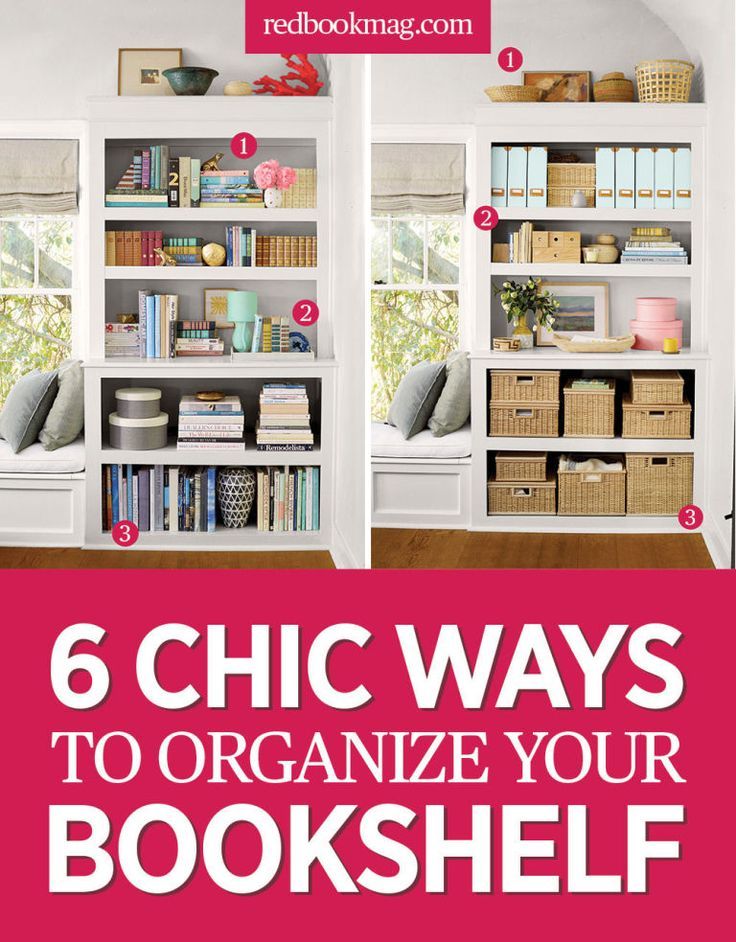 And it doesn't take up space at all. nine0003
And it doesn't take up space at all. nine0003
Our opinion:
- It must be remembered that direct sunlight for books is the last thing they need. Therefore, in all cases when "beauty for" you place a shelf in a room full of light, try not to put collectible items on it. Limit yourself to pocketbooks and glossy magazines. Or a collection of works by the classics of Marxism-Leninism (ask the older generation).
The “classic” book storage scheme that we are accustomed to in a furniture wall or on shelves covering one of the walls is not the only possible one, which is already obvious. One of the brightest steps in this area is an unexpected and ingenious solution to increase the functionality of ordinary interior items by organizing books and magazines in them. The fantasy of designers overflows when this idea begins to be embodied "in the material." We agree that a lot of what is presented is quite realistic to do yourself - or order, based on the option you like the most.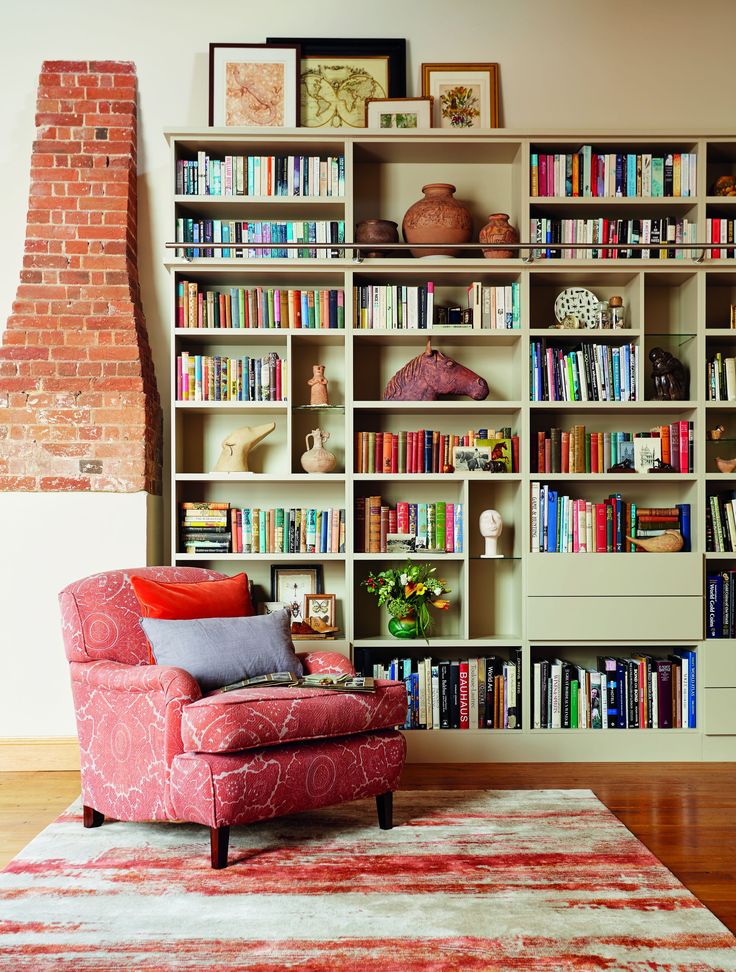 nine0003
nine0003
Both the opening itself (passage) and the space around it are used. Filling a wall with a door or window with bookshelves is a superficial idea. Its attractiveness lies in the ease of implementation and in the most rational use of space. The functionality of the walls adjacent to the door or window, as a rule, is zero in ordinary interiors. Isn't it time to start fighting this unjustified tradition? And we will start with our own housing, which will only benefit from this. nine0003
The idea of a bookshelf as a wooden box with certain proportions, which is mounted on the wall and in which books are stored, has become outdated a long time ago. Unfortunately, manufacturers of mass furniture continue to live in the century before last, and it is rare to find anything original, beautiful and comfortable for sale that continues to be a bookshelf. But the most diverse ways of making bookshelves are possible, which - without losing functionality - will become a bright and memorable element of the interior.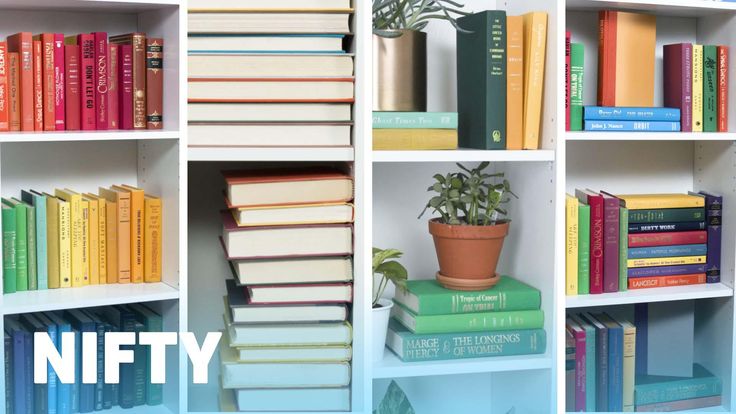 nine0003
nine0003
The options for organizing storage places for a large number of books presented for review first of all cause a smile. And not because it's funny, not at all. The imagination of designers who came up with such unusual solutions is amazing. Agree that there is not a single idea for the sake of an idea, everything is completely functional and very convenient. If you organize something like this at home, then the competition for the possession of this space among family members will be the most serious. nine0003
Greetings from the novels of Alexandre Dumas (and other everyday writers of antiquity, antiquities and secrets), in which a lot of secret passages are hidden just behind the wall panels and bookcases. In our realities, such a move is appropriate, first of all, for turning a passage room into an impassable one. Quite often this is very, very relevant, but here is such an idea! And we hide the shortcomings of the apartment, and we organize a library place.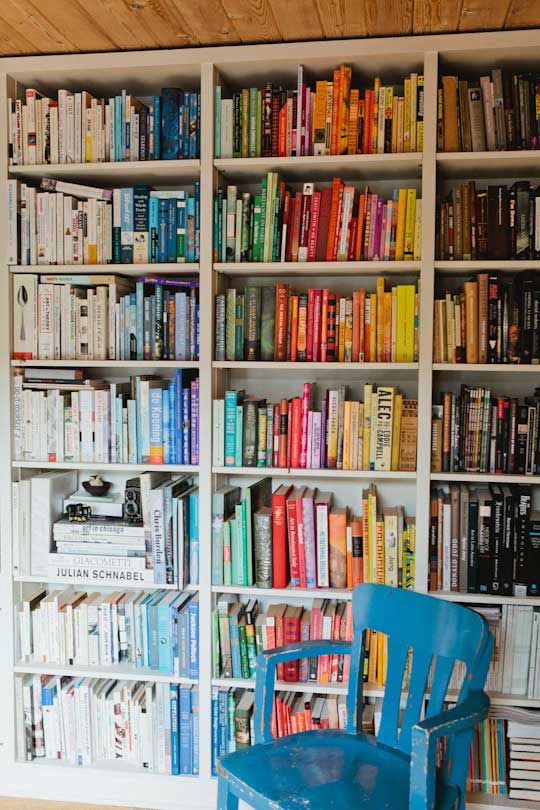 Well, it's not worth talking about the emotions of those who see it. nine0003
Well, it's not worth talking about the emotions of those who see it. nine0003
Our opinion:
— In order to realize the idea of a pivoting door-shelf, a professional is needed. Such a design is a rather complex engineering structure, and for its normal operation without distortions, a powerful frame system is needed, masked by a wooden cladding.
The traditional library wall, filled with cabinets or shelves, can be transformed in the most incredible way thanks to the designer's imagination and conditions "in place". From strict geometry to artsy empire style, from bright pop art to gloomy ethnic style - a wall with books can fit into any style. You just need to think a little and choose what you like the most. nine0003
pinterest.com
Share:
Rate this article:
Thank you for your rating! Want to leave a comment?
no send
Thank you for your vote.
Follow us:
Follow us on Facebook
Follow us on Vkontakte
Bookshelves: organization secrets | BeautyRobot.
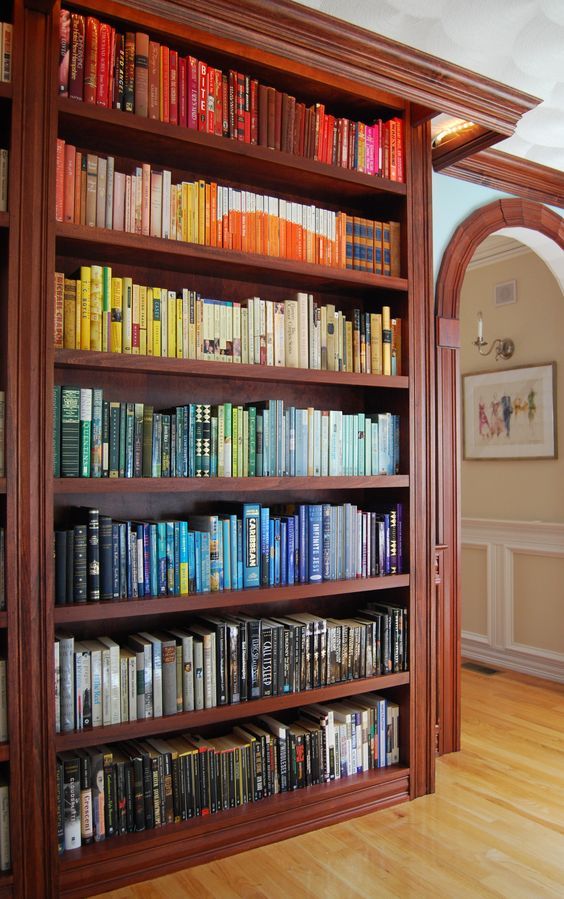 ru
ru Alphabetical
This method is the most obvious and probably familiar since childhood, if not from public libraries, then at least from the school class magazine. Books should be listed by author's last name. nine0003
The method is well suited for large book collections: it will be at least approximately clear where to look for a particular book.
But it also has quite a few disadvantages: the series will have to be staged out of order, and the method is suitable only for fiction. Non-fiction books are more often remembered by their title than by their author, and there are often several of them.
If your library is regularly updated, try not to fill the shelves completely so that you can place new volumes in their rightful places. nine0061
By genre
Another familiar book sorting method that will be especially good for very large and varied collections. After all, it is illogical to keep mixed poetry, popular science literature and action-packed detective stories. If you distribute books by genre, within each category you can use just alphabetical sorting.
If you distribute books by genre, within each category you can use just alphabetical sorting.
In this case, by genre, I mean a broader concept: you can separately put books of a certain era, children's books, separate domestic authors from foreign ones, and so on. nine0003
Focus on the composition of your library: what kind of literature is there the most, what topics deserve separate shelves?
True, there will definitely be books of related genres that could stand in several places at once, and you just have to decide on which shelves it will be more convenient for you to store them and strangle your inner perfectionist a little.
And it will also be very useful for you….
Catalog of books
Of course, this is not directly related to the topic of the article, and yet I want to draw your attention to the convenience of such a list, especially if it is stored in electronic format. You can always quickly see what books you have, in which edition, you can also indicate on which shelf this or that book is located.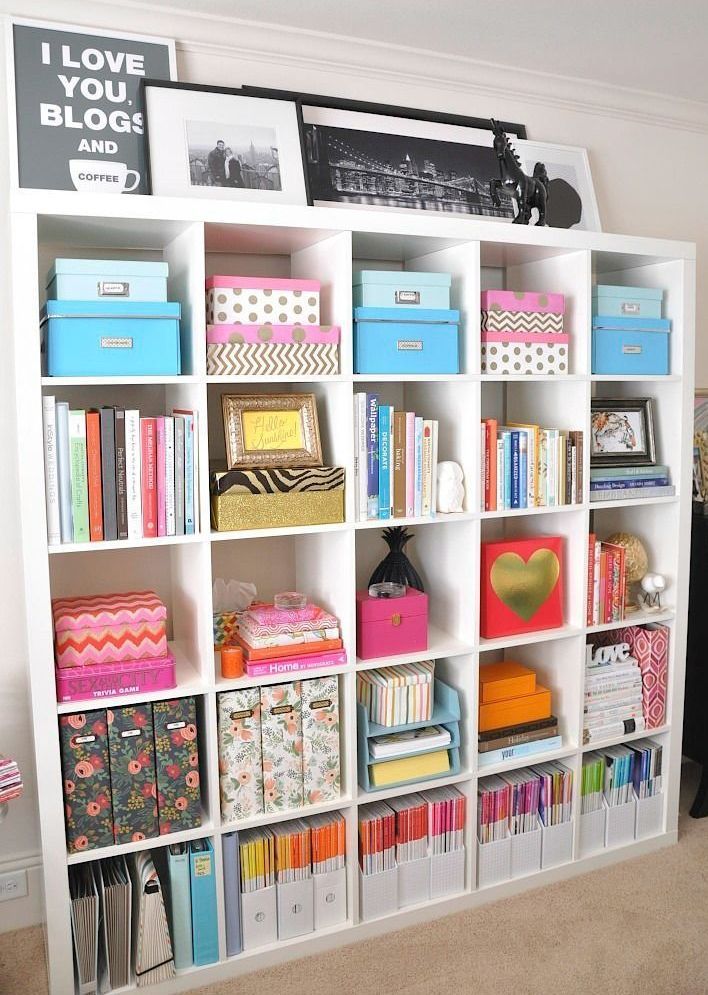 nine0003
nine0003
I maintain my catalog on the Livelib website, which I told you about in the article “The Most Useful Sites for Readers” - there, in a personal selection, you can select a specific edition of the book and make any note to it.
But you can also use a regular Excel spreadsheet or a Word document, whichever you prefer. In any case, a search will be available, so you can get the information you need quickly and easily.
By series
The next way to sort books, which can be paired with something else, is by publishing series. Now in the book market there are many beautiful series of books with both classics and modern literature. Of course, these editions look best together. nine0003
Bookshelves will look neat when books without sorting by appearance look very colorful, because all the volumes are of different colors and different heights.
The disadvantage of this method is that the books of the same author may have to be placed in different places in the bookcase: sometimes the works of one writer are published in different series.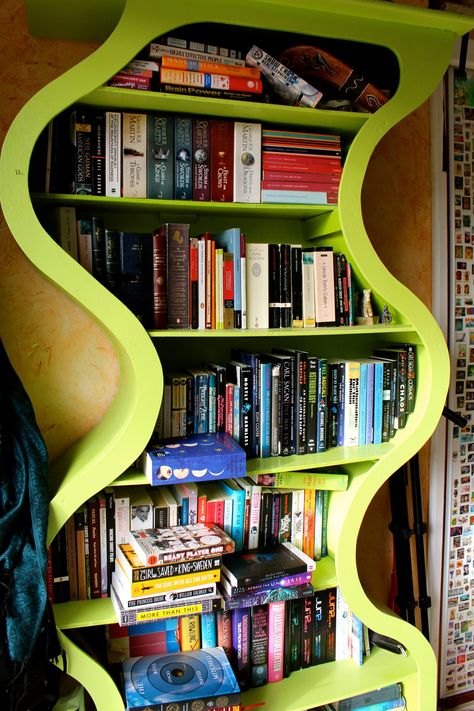 Either a good memory will help here - in order to always know in which edition you have Crime and Punishment, and in which - The Brothers Karamazov - or the same book catalog that was discussed above. nine0003
Either a good memory will help here - in order to always know in which edition you have Crime and Punishment, and in which - The Brothers Karamazov - or the same book catalog that was discussed above. nine0003
Fit to size
This method can be used as a base if you still have a small library and just a couple of bookshelves. Otherwise, it can be combined with other sorting principles.
Be that as it may, if you put together all the tall books, all the mini-editions, narrow books, and so on, you can arrange them more compactly and make more efficient use of space.
In addition, this way the books will look neater.
Stacked
Logic in the distribution of books is very important, but one should not forget about aesthetics. Even rows of books look beautiful, but if they are “broken” in neat piles in several places, the library will look even better.
This method also has a practical side: it is more convenient to store small publications, including paperback books, in stacks.
If you put such books in the usual way, there will be a lot of empty space above them, which you will not use in any way, and you can use the space in the stack more efficiently. nine0003
Front side
This is another way to “water down” a row of books that you have probably seen in bookstores. One book on the shelf turns its cover to the viewer, the rest stand as usual.
In this way, you can focus on your favorite publications, admire them like paintings.
The space is used wastefully, but the owners of large bookcases with shallow shelves can afford it. On a deep shelf, a book located "face" will be poorly visible. nine0003
Another option is to “hide” a stack of pocket or narrow format publications behind such a book. Then the place is not wasted, and your favorite cover is always perfectly visible.
By color
An unusual and effective way to decorate your library is to arrange books by color so that the spines form a rainbow.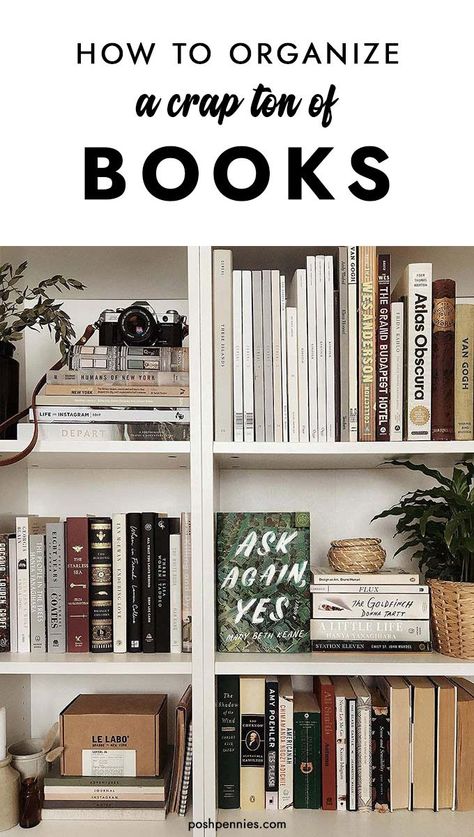 I think such a bookcase will attract the attention of even your non-reading friends for a long time when they drop by for a visit.
I think such a bookcase will attract the attention of even your non-reading friends for a long time when they drop by for a visit.
But, of course, finding a certain book in such an arrangement will not be easy. Therefore, the method is best suited for a small library that you yourself have lovingly collected, so remember each volume perfectly “in person”. nine0003
If you decide on such an arrangement, having a collection of books of several hundred books, you will simply need a catalog.
Tetris
Alas, it is not always possible to think about beauty and convenience, sometimes space dictates its own rules. There is little space for books, but there are many books themselves. Of course, in this situation it will be especially useful to sort out your books and say goodbye to those that are no longer needed: you didn’t like it, you didn’t want to read it, books at once, and so on.
But speaking of storage, try to use every centimeter of space on the shelves without damaging them. Sort books by size first so that the rows and stacks are even.
Sort books by size first so that the rows and stacks are even.
Use the space above the rows of books to accommodate thin stacks of titles, and under the books you can place bulky editions. If the books are in two rows, and there is still room on the edge of the shelf, one or two volumes can be perpendicularly placed between the rows. In general, nothing can be done if there is not enough space, we recall one of the most famous electronic games - Tetris. nine0003
Separate Unread
Unless you're one of those titans of the spirit who can buy a new book only after reading the previous one, you probably have some unread copies in your collection. It would be wise to give them a separate shelf (or many shelves, if you are as good at keeping yourself in hand as I am). Then it will be much more convenient to choose what to read next, and no book bought on the day of the sale at the book market will be forgotten or lost. nine0003
Stacks of unread
I have a lot of unread books, no less than the ones I read. Therefore, I initially store them on the same shelves, but I put the read books, and put the unread ones in piles. This is also very visual and convenient, while the sorting of books by genre does not go astray - I immediately put the purchased book in its rightful place. However, this method is convenient only if there is still plenty of space in the bookcase. For several years the system worked successfully, but now it is already difficult for me to either squeeze a book into a pile, or put it down when I have read it. nine0061
Therefore, I initially store them on the same shelves, but I put the read books, and put the unread ones in piles. This is also very visual and convenient, while the sorting of books by genre does not go astray - I immediately put the purchased book in its rightful place. However, this method is convenient only if there is still plenty of space in the bookcase. For several years the system worked successfully, but now it is already difficult for me to either squeeze a book into a pile, or put it down when I have read it. nine0061
Spine to the wall
I saw this extremely unusual method on the ABC Friends channel. Arina and Polina, the authors of this channel, once staged a real revolution on the shelves and put all the books with a cut to the viewer so that not a single title could be seen. This was done as an experiment, so that the owner of the library would choose a book for blind reading, almost at random (almost - because some books can still be recognized).


